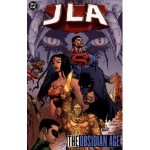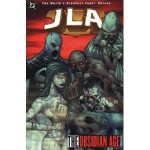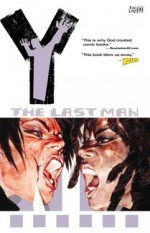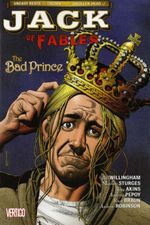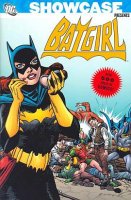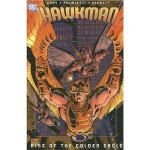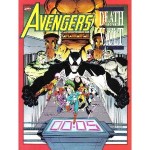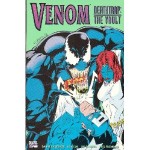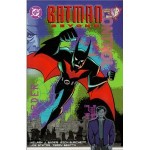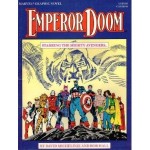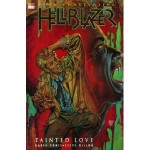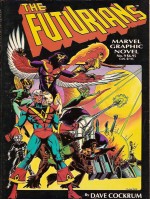
By Dave Cockrum, with Ricardo Villagran & Paty (Marvel/Eternity)
ISBN: 0-939766-81-7 & 0-944735-00-2
Dave Cockrum was one of the last great classical stylists of the American comics industry; a supremely skilled draughtsman, proficient designer and uniquely imaginative yet whimsical storyteller who died far too young in 2006.
Born in 1943 in Oregon, he was raised an army brat, traveling all over America and found joy and companionship early on as part of the burgeoning fan community that developed during the Silver Age of Comicbooks.
A devoted science fiction reader and fan he was greatly influenced by the clean-lined, humanistic work of Wally Wood, Mac Raboy, Gil Kane, Joe Kubert and especially Murphy Anderson with whom Cockrum began his professional career as an art assistant and inker following military service in the navy during the Vietnam conflict.
After working with and then replacing Anderson on the freshly revived Legion of Super-Heroes strip in Superboy in 1973, Cockrum left for Marvel following a dispute over artwork ownership, bringing the same stylish flair and irrepressible imagination to the groundbreaking and landmark revamping of the moribund X-Men in 1975.
After co-creating the last true and enduring sensation of the 20th century, Cockrum moved on (and indeed, back) returning to the Merry Mutants for a second superb and innovative run from Uncanny X-Men #145- 164) before crafting this instantly intriguing, criminally underappreciated and tragically unfulfilled costumed fantasy very much in the manner of both the Legion and X-Men for the company’s new Marvel Graphic Novel format.
During the 1980s Marvel was an unassailable front-runner in the American comicbook business, outselling all its rivals and increasingly making inroads into the licensed properties market that once went automatically to the Whitman/Dell/Gold Key colossus. Far too much of their own superhero stable might have become cautious and moribund, but the company was eagerly expanding into other arenas and formats.
The company had moved quickly during the early days of the Direct Sales market and were soon market leader in the new field with a range of “big stories†told on larger sturdier, glossy white pages (285 x 220mm rather than the standard 258 x 168mm of the day’s standard comicbooks) emulating the long-established European Album.
The line had already featured not only proprietary characters in out-of-the-ordinary adventures (The Death of Captain Marvel and X-Men: God Loves Man Kills) but also in-continuity launches like The New Mutants, licensed assets like Elric: the Dreaming City and crucially creator-owned properties and concepts such as Super Boxers, Star Slammers and Dreadstar.
Let loose in a playground that clearly offered and delivered so much more bang-per-buck and peril-per-page, The Futurians synthesised and recapitulated with unbridled, enthusiastic abandon everything that Cockrum so obviously adored about swashbuckling comics adventures… liberally dosed with equal amounts of colourful escapism and dark, pragmatic common sense.
The story is cosmic in scope and chillingly effective in execution. In those long-gone days, actions seldom had truly far-reaching consequences but in The Futurians an entire superhero universe is constructed and the whole planet suffers accordingly. The death-toll was shocking for those innocent days but so logically apt…
In the far-distant world of Tomorrow a worn, spent planet Earth is still a place of war as humanity has developed into two species: the perfect men of terminus and the mutant “Inheritors†of Ghron. When the conflict escalated to the point where the Inheritors used the moon as a missile and literally destroyed the world the Science Generals of Terminus discovered that Ghron had taken an ultimate step – wrecking the sun itself and fleeing back into the planet’s past.
Unable to follow, the Last Men devised a desperate plan and, using the incredible sentient being who lived in our wounded star as a targeting method, sent packages of genetic material in scattershot fashion through Earth’s history: chromosomal “time-bombs†that would alter the nature of any mortals hit by the packets and create potential warriors to combat the Inheritors whenever and wherever they should materialise.
Not all the transformational bullets were on target, overshooting by millennia in some cases – but the majority strike the proper target: the 20th century. To make certain of their scheme the leader of the Last Men was reduced to bodiless intellect and dispatched to yesterday to act as shepherd, general and guide for the new champions.
The Time is Now: mysterious entrepreneur and technocrat Vandervecken has gathered a disparate group of individuals at the headquarters of Future Dynamics to participate in a grand – and extremely profitable – experiment. With the time-tossed aid of solar elemental Sunswift the eight men and women – all unsuspectingly primed by the mutagenic “time-bombs†– are transformed into incredibly powerful superhumans… and not a moment too soon as the Inheritors have also arrived and begun devastating the planet.
Animalistic Blackmayne, Terrayne the Earthmover, pocket-superman Avatar, aquatic metamorph Silkie, avian raptor Werehawk, insectoid Mosquito and phantasmal Silver Shadow join Sunswift and the tele-potent Vandervecken in defeating the initial assaults but not without terrible casualties – including New York City, utterly eradicated in a meteor bombardment…
In spectacular saves-the-day fashion the neophyte group finally overcome the temporal invaders and prepare themselves for further missions…
Which didn’t happen for quite a while since Cockrum then turned down a deal for a continued series with Marvel in favour of a too-good to-be-true and subsequently ill-starred alliance with new, independent publisher Lodestone Comics. That led to three issues (plus another that was never released) eventually all collected in an incredibly scarce, low-print run standard-format graphic novel from Eternity in 1987.
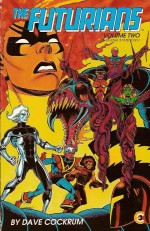
In that collection Cockrum, assisted as ever by his wife and colourist Paty and for the first time by inker Ricardo Villagran, explored the days after Doomsday beginning with ‘Aftermath’ wherein the world slowly adjusted to the destruction of Manhattan, a potential change in global climate and the psychic shock of what was to all intents and purposes an alien invasion. With fundamentalist groups claiming the wrath of their particular god, Cold War powers on nervous alert and a refugee crisis building on the East Coast, Sunswift set about repairing the atmospheric envelope whilst the rest of the team split up to tackle the rabble-rousing Thunderbolts and offer assistance to the survivors of New York.
Already at that monolithic Ground Zero are veteran superheroes Doctor Zeus, Hammerhand and affable mystic Jack O’Finagle, but there are also horrors lurking as monsters from deep within the Earth’s fractured mantle have begun hunting for tasty surface mortals in ‘The Burrowers From Beneath!’
Some metahumans and lots of mere mortals are missing so Avatar leads Silver Shadow, Mosquito and Terrayne after them and the AWOL Blackmane, resulting in a grisly and terrible showdown monster-mash deep within the ‘Web of Horror!’ that spills up and over onto the surface where the hard-pressed military bear the brunt of the battle…
Forced to retreat the Futurians regroup whilst Silkie discovers a new power which leads to a reassessment of their dire situation, the true origin of the giant horrors and a ratcheting up of tension when the army starts chucking nukes at the creatures which apparently feed on raw energy…
This glorious superhero fantasy saga resoundingly concludes as the heroes ‘Let the Fire Fall!’ but that was basically it for the Futurians. In recent years writer Clifford Meth has worked to bring the tale to Hollywood (with no news as of this writing) but if there’s any justice hopefully the renewed interest will at least lead to a proper and complete reissue of these cracking yarns in an appropriately grand deluxe edition…
The Futurians © 1983 David Cockrum. Volume 2 ™ and © 1987 David Cockrum. All rights reserved.

